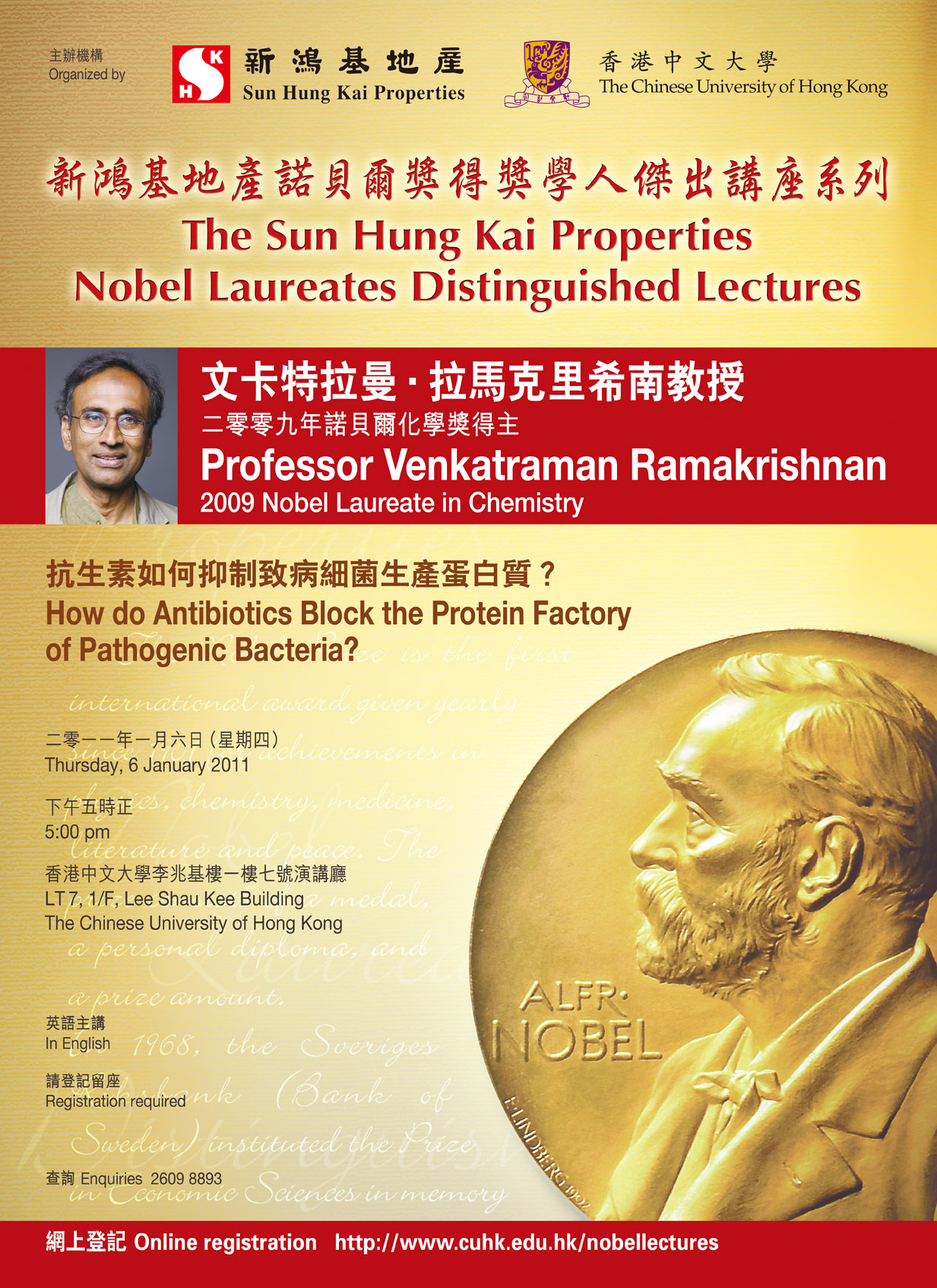Events
SHKP Nobel Laureates Distinguished Lecture by Professor Venkatraman Ramakrishnan, 2009 Nobel Laureate in Chemistry on “How do Antibiotics Block the Protein Factory of Pathogenic Bacteria?”
6 Jan 2011
5:00 pm
LT 7, 1/F, Lee Shau Kee Building, CUHK
Professor VenkatramanRamakrishnan grew up in India and moved to the U.S.A. in 1971. After initially being trained as a physicist at Ohio University, he switched to biology in 1976 at the University of California, San Diego. His interest in ribosomes dates back to 1978 when he joined Professor Peter Moore’s laboratory as a postdoctoral fellow at Yale University.
Professor Ramakrishnan began his independent career at Brookhaven National Laboratory in 1983. In 1995 he moved to the University of Utah to become a professor of biochemistry. Finally, in 1999, Professor Ramakrishnan moved to his current position as a scientist at the MRC Laboratory of Molecular Biology in Cambridge, England.
In the past, Professor Ramakrishnan has also been interested in chromatin structure and in x-ray crystallographic methods. He currently focuses entirely on ribosome structure and function. In 2000, his laboratory determined the atomic structure of the 30S ribosomal subunit and its complexes with ligands and antibiotics. This work has led to insights into how the ribosome “reads” the genetic code, as well as into various aspects of antibiotic function. In the last few years, Professor Ramakrishan’s laboratory has published structures of the entire ribosome in complex with tRNAs as well as release and elongation factors.
Professor Ramakrishnan is a Fellow of the Royal Society and a Member of the U.S. National Academy of Sciences.
Free
2609-8893
Infectious diseases caused by pathogenic bacteria is a continuing world-wide problem. Nearly half of antibiotics act by blocking protein synthesis in bacteria. In this talk, Professor VenkatramanRamakrishnan will give a brief introduction to the idea behind antibiotics, and then talk about the ribosome, the large molecular machine that translates the information in our genes to make proteins in all forms of life. Finally, Professor Ramakrishnan will conclude by showing how the atomic structures of the ribosome were used to see directly how antibiotics would block its function, and about how this information is now being used in the design of new antibiotics.




